Occupational Environment Monitoring at Solar Power Factory
99,000 ₫
Note: The above price is calculated for one sample; the price may fluctuate depending on the area of the environment to be monitored and market movements. For more accurate pricing support, please refer to the price list or contact our consulting staff directly.
Environmental monitoring of a solar power factory is a session of collecting, analyzing, and evaluating factors at the workplace that may be harmful to workers’ health.
Table of Contents
Toggle1. Overview of Solar Power Factories
a. What is a solar power factory?
A solar power factory (also called a solar energy factory) is a facility that generates electricity from solar energy. This factory uses solar panels (or solar cells) to convert sunlight into electricity.
Solar panels are installed over a large area, such as on the ground or rooftops. When sunlight hits the panels, the photovoltaic cells inside the panels generate an electric current. This electricity is then collected and converted into usable electrical energy to supply the power grid.
Solar power factories can vary in size and capacity, from small factories producing a few kilowatts for households to large-scale factories producing megawatts or even hundreds of megawatts to supply the national electricity grid. This technology is considered a renewable and environmentally friendly energy source, helping reduce emissions and stabilize energy supply.

b. Production stages in a solar power factory
The main production stages in a solar power factory include:
- Design and Planning: Before constructing a solar power factory, design and planning are carried out. This stage is essential to determine the location of solar panel installation, mounting systems, production lines, and control procedures.
- Land Preparation: Once the location is selected, the land must be prepared for installation. This includes leveling the land, treating the ground, and providing a drainage system.
- Solar Panel Installation: Solar panels are mounted on support structures such as aluminum or steel frames. Panels are arranged in arrays and connected to form large solar modules.
- Electrical System: After installing the solar panels, the electrical system is set up. Electricity from the panels is collected and converted into alternating current using inverters for grid supply or internal use.
- Energy Storage System: For large solar factories, energy storage systems can be used to store surplus energy and supply electricity when sunlight is not available.
- Control and Monitoring System: A control and monitoring system is installed to track the factory’s performance, monitor parameters such as power output, panel efficiency, and adjust settings as needed.
- Maintenance: Routine maintenance is conducted to ensure stable operation and maximum performance, including cleaning panels, checking the electrical system, and replacing damaged components.

c. Machinery used in solar power factories
A solar power factory uses various types of machinery for production and operation. Common equipment includes:
- Solar Panels: The main component used to capture sunlight and convert it into electricity.
- Inverters: Convert direct current from solar panels into alternating current suitable for grid supply or internal systems.
- Energy Storage System: In large solar factories or self-sufficient systems, lithium-ion batteries store surplus energy for use when sunlight is unavailable.
- Control and Monitoring System: Software and hardware systems that monitor, control, and manage factory operations, recording performance data and adjusting parameters for optimal output.
- Water Supply System: In some solar technologies, water-cooling systems provide cooling for panels or electrical systems.
- Fencing System: Protective fences to secure the factory and restrict unauthorized access.

d. Potential occupational diseases for solar power factory workers
Workers in solar power factories may face various health issues and occupational risks. Some potential occupational diseases include:
- Photovoltaic Dermatitis: Skin inflammation due to exposure to ultraviolet (UV) radiation from sunlight and materials in solar panels, causing dryness, redness, itching, and inflammation.
- Thermal Burns: Direct contact with hot components during operation or maintenance can cause burns.
- Musculoskeletal Injuries: Installation and maintenance work require physical effort, which can lead to strain, back pain, and other musculoskeletal injuries.
- Workplace Accidents: Like any industrial setting, accidents may occur, including slips, falls, collisions, electrical hazards, and high-voltage incidents.
- Heat-related Health Issues: Working in high-temperature environments can lead to heat stress, heat exhaustion, and other temperature-related health problems.
Applying safety measures, following proper procedures, and using appropriate personal protective equipment is essential to minimize the risk of occupational diseases and accidents in solar power factories.

e. Solar power factories in Vietnam
Vietnam currently has many operating solar power factories. Notable examples include:
- Long Thanh Solar Power Factory: Located in Dong Nai province, with a capacity of 800 MW.
- Dau Tieng Solar Power Factory: Located in Binh Duong province, with a capacity of 500 MW.
- Tra Vinh Solar Power Factory: Located in Tra Vinh province, with a capacity of 168 MW.
- Phuc Son Solar Power Factory: Located in Ninh Thuan province, with a capacity of 330 MW.
- Binh Dinh Solar Power Factory: Located in Binh Dinh province, with a capacity of 257 MW.
- Srepok 1 Solar Power Factory: Located in Dak Lak province, with a capacity of 50 MW.
These are examples, and Vietnam continues to invest heavily in solar energy development with many ongoing and planned projects.
2. Overview of Occupational Environment Monitoring Services
a. What is occupational environment monitoring in a solar power factory?
Occupational environment monitoring (or workplace environmental measurement) in a solar power factory is the process of collecting, evaluating, and analyzing environmental factors in the workplace. The goal is to take timely measures to reduce harmful effects on workers’ health and prevent occupational diseases. Monitoring the occupational environment is mandatory for all solar power factories.
Occupational environment monitoring plays a critical role in protecting workers’ health because the workforce is the main resource of a business and directly contributes to its profits. Workers frequently exposed to risk factors or occupational hazards beyond permissible limits may suffer health effects and occupational diseases.
REGISTER OCCUPATIONAL ENVIRONMENT MONITORING SERVICE
b. Nam Viet’s occupational environment monitoring program
Nam Viet’s occupational environment monitoring program is developed by engineers specializing in labor safety and environmental protection. Its goal is to ensure workers’ health and safety by using modern measurement methods to monitor air quality, water, microclimate factors, physical conditions, and dust in the workplace. This program is crucial for maintaining a safe working environment and protecting workers’ health.
Moreover, Nam Viet’s program contributes to research and development of solutions to improve workplace environmental quality. With a professional and dedicated team of monitoring experts, Nam Viet’s exclusive program is a breakthrough in occupational safety and environmental management in Vietnam.

c. Standardization in occupational environment measurement procedures
Standardization in Nam Viet’s measurement procedures ensures the accuracy and reliability of monitoring results. The program follows recognized standards and procedures from Ho Chi Minh City Department of Health. This ensures that collected data is reliable for evaluating occupational environments and making informed decisions to improve workplace safety and protect workers’ health.
These standardized procedures ensure that monitoring results are carried out by qualified monitoring experts with many years of experience, providing managers and specialists with trustworthy results for accurate decisions in occupational health and environmental protection.
By applying standardized measurement procedures, Nam Viet demonstrates its commitment to creating a safe working environment, protecting workers’ health, and contributing to the development of occupational safety and environmental management in Vietnam.
d. Reporting occupational environment monitoring results in solar power factories
Monitoring results are compiled according to Form 04, Appendix III of Decree 44/2016/ND-CP and made in two copies: one for the contracting factory and one kept by the monitoring organization.
Monitoring results are kept indefinitely according to legal regulations.

e. Frequency of occupational environment monitoring according to law
According to Clause 2, Article 18 of the Law on Occupational Safety and Hygiene 84/2015/QH13, employers must monitor harmful factors in the workplace at least **once a year**.
f. Deadline for submitting occupational environment monitoring reports according to law
Reports must be submitted before December 31 each year. Factories are required to submit monitoring results to the local Department of Health where the factory is located.
If there are changes in technology or production processes, or when upgrading the factory that may generate new hazardous factors, factories must update their occupational hygiene records regarding these hazards.
g. Penalties for violations of occupational environment monitoring by employers
According to Article 27 of Decree 12/2022/ND-CP dated January 17, 2022:
- Clause 2: Fines from 2,000,000 – 5,000,000 VND for employers who fail to publicly inform workers at the monitoring site of monitoring results and hazardous factors immediately after receiving them.
- Clause 3: Fines from 20,000,000 – 40,000,000 VND for employers who fail to perform occupational environment monitoring to control hazards to workers’ health as required by law.
- Clause 4: Fines from 40,000,000 – 60,000,000 VND for employers who collude with monitoring organizations to falsify monitoring results, without reaching criminal liability.
3. Harmful Environmental Factors for Workers in Solar Power Factories
Workers in solar power factories may be exposed to several harmful environmental factors. Below are some potential environmental factors that may affect workers’ health:
- Ultraviolet (UV) radiation and high temperatures: Workers are directly exposed to sunlight and high temperatures during the installation, maintenance, and operation of solar panels. This can cause sunburn, skin darkening, red spots, and other health issues related to sunlight and heat.
- Chemicals and materials: During production and maintenance, workers may come into contact with chemicals and materials that can irritate the skin, respiratory system, and cause other health problems. For example, cooling solutions, additives, and cleaning agents used during operations may have potential health impacts.
- Dust and fine particles: During construction, maintenance, and operation, dust and fine particles may be generated from construction materials, sand, soil, and other substances. Inhaling these dust and particles can irritate the respiratory tract and cause health issues.
- High voltage: In some cases, workers may be exposed to high voltage while working with electrical equipment and systems in solar power factories. High voltage poses a risk of electric shock and other electrical accidents.
- Occupational accidents: As in any industrial environment, working in solar power factories also carries the risk of occupational accidents. This includes risks from moving equipment, working at heights, collisions, falls, and other hazards.
REGISTER FOR OCCUPATIONAL ENVIRONMENT MONITORING SERVICE
4. Measures to Improve the Work Environment in Solar Power Factories
To improve the working environment in solar power factories and protect workers’ health, the following measures can be applied:
- Training and education: Ensure that workers are trained in occupational safety and safe work procedures in solar power factories. Provide the necessary knowledge and skills to prevent accidents, use personal protective equipment, and handle waste safely.
- Risk assessment: Conduct risk assessments and analyze harmful environmental factors during work. Identify hazardous areas, evaluate exposure levels, and propose appropriate preventive and protective measures.
- Use of personal protective equipment: Ensure that workers are properly equipped with and use personal protective equipment such as helmets, safety glasses, masks, gloves, and protective clothing. Also, ensure that this equipment is regularly inspected and maintained to ensure effectiveness.
- Waste management: Implement safe and legal waste management practices. Ensure that waste collection, treatment, and recycling are carried out according to procedures and safety standards.
- Equipment inspection and maintenance: Perform regular inspection, maintenance, and repair of equipment and machinery in solar power factories to ensure safe and efficient operation. Conduct periodic maintenance for solar panels and related equipment.
- Air quality monitoring: Monitor air quality in and around the solar power plant to detect pollution factors early and apply corrective measures promptly.
- Building a safety culture: Foster a safety culture in the solar power plant by creating a safe working environment, encouraging feedback, and raising safety awareness among all members of the organization.
- Regularly conduct occupational environment monitoring in factories, collect and analyze harmful factors affecting workers, and adjust to reduce risks to prevent occupational diseases.
5. Benefits of Regular Monitoring in Solar Power Factories
An Toàn Nam Việt provides businesses with excellent benefits when using occupational environment monitoring services in accordance with Decree 44/2016/NĐ-CP on managing and controlling harmful factors in the workplace affecting employees.
- Businesses can proactively control harmful factors in workshops or factories.
- Receive recommendations on measures to reduce harmful factors and improve workplace quality.
- Indirectly protect human resources, a key factor in business development.
- Minimize the impact of occupational diseases on workers’ health, reducing future medical costs.
- Improved worker health leads to better product quality and ensures stable production output.
- Ensure compliance with labor safety laws, avoiding legal risks.
- Enhance credibility and professionalism, thereby elevating the company’s brand.
Nam Viet’s environmental monitoring service is a solution to minimize occupational disease risks, contributing to a clean and high-quality work environment.

6. Nationwide Occupational Environment Monitoring Center
Nam Viet Occupational Environment Monitoring Center is a professional unit specializing in monitoring and measuring workplace environmental quality throughout all provinces of Vietnam. With an experienced team of environmental monitoring specialists, the center uses modern measuring equipment to ensure accuracy and reliability.
In addition to providing monitoring services, the center assists clients in planning, managing, and following up on occupational environment issues. With the motto “customer-centered,” the center prioritizes client satisfaction, meets all client needs, and commits to providing the best solutions.
REGISTER FOR OCCUPATIONAL ENVIRONMENT MONITORING SERVICE
With investments in technology, equipment, and human resources, Nam Viet’s monitoring center has become a reputable unit in occupational environment monitoring in Ho Chi Minh City, with the following goals:
- We value brand reputation and the quality of our service products.
- We provide clients with the best and most suitable solutions.
- With a team of experienced Masters and Engineers committed to protecting the environment and benefiting businesses.
- Clients of Nam Viet Environmental Monitoring will receive professional services from experts in the field, as well as the best cost advantages.
The occupational environment monitoring process at Nam Viet includes the following steps:
- Before monitoring, ensure all equipment is calibrated and adjusted according to legal regulations.
- Carry out the monitoring process as committed to the Department of Health.
- Report accurate monitoring results to employers.
- If monitoring results indicate unsafe conditions for workers, Nam Viet will provide corrective solutions, and the plant will implement:
- Implement measures to improve working conditions, minimizing harmful factors and preventing occupational diseases.
- Organize medical check-ups to detect occupational and work-related illnesses early for employees in unsafe work environments.
- Provide compensation in kind for workers according to labor law regulations.

7. Occupational Environment Monitoring Price List
To help businesses conduct professional and effective occupational environment monitoring, Nam Viet provides clients with a detailed and reasonably priced service price list.
- Our price list provides detailed information on the costs of all monitoring services, including transportation, measurement, analysis, and reporting. Clients can be confident in the accuracy and reliability of the monitoring reports provided.
- We are committed to offering competitive and reasonable prices while providing prompt and professional consultation on any service-related inquiries.
- With Nam Viet’s price list, clients can easily select services that best meet their needs. We guarantee maximum satisfaction with professional service quality.
1 review for Occupational Environment Monitoring at Solar Power Factory
No comments yet

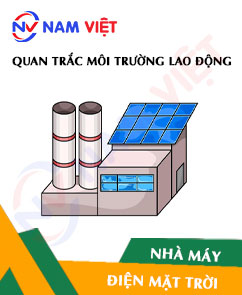
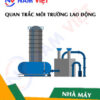
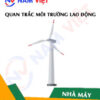





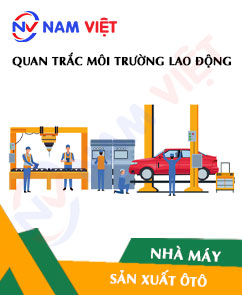
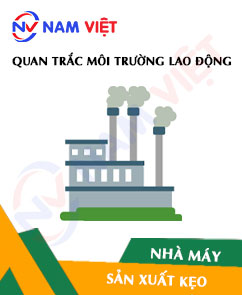
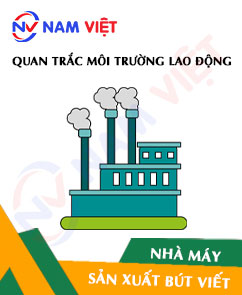
maituyet.cuong12
Good labor environment monitoring service!